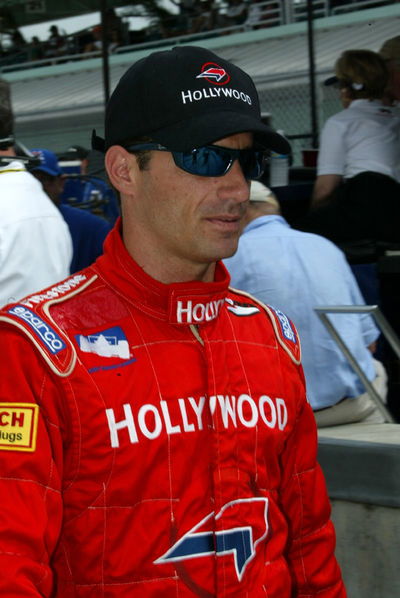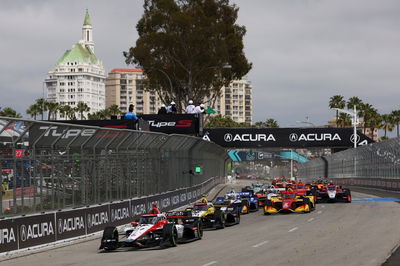Veteran IMS superintendent Cagle dies.
Clarence Cagle, who helped save the Indianapolis Motor Speedway from oblivion after World War II and served as track superintendent for 30 years, died at his home in Daytona Beach on Saturday aged 88.
Clarence Cagle, who helped save the Indianapolis Motor Speedway from oblivion after World War II and served as track superintendent for 30 years, died at his home in Daytona Beach on Saturday aged 88.
Originally from America's sprint-car heartland in Terre Haute, Indiana, Cagle returned from 33 months of Army duty, much of it in the European campaign, in 1945 and went back to work for the Hulman family. When Tony Hulman purchased the dilapidated Speedway a few months later, he called in Cagle from his road job as expediter of raw materials for the family-owned Clabber Girl Baking Powder firm to help put the track in shape in time for resumption of the Indianapolis 500-Mile Race, barely seven months away.
In a quiet and methodical way, Cagle spent the next 50 years working either as superintendent or consultant for the track he considered "my baby." He saw it rise from the ashes of World War II disuse - the track was closed from 1942-45 - into the magnificent Mecca of automobile racing that it is today.
He worked for Hulman until 1977 and, many years later, provided advice for the track's current president and Hulman's grandson, Tony George.
Cagle recalled in a 1998 interview how he met T.E. "Pop" Myers and Wilbur Shaw at the Speedway's small office in Indianapolis after Hulman had purchased the facility from World War I flying ace Eddie Rickenbacker. Myers, Shaw and Cagle drove out to the track, located about 4 miles from downtown Indianapolis.
"We unlocked the gate, and it fell down," Cagle said. "Everything was rotten, there were weeds everywhere. It was a terrible mess."
Cagle worked under Jack Fortner the first couple years and in 1948 was promoted to superintendent. Four years later, he was promoted to vice president of the Speedway Corp.
"I knew (the track) was salvageable, because Tony Hulman had bought so many broken-down things and made them work," Cagle said. "We knew it was going to take time. Pop and Wilbur knew a lot about racing but nothing about construction."
Hulman started with a year-to-year plan to upgrade the Speedway. A five-year plan followed, then a 10-year plan. Slowly the wooden stands disappeared, replaced by modern aluminium seating. One time a section wasn't completed until early on race morning.
And in 1956, the last discernable relic of pre-World War II days, the wooden Pagoda, was replaced by a modern aluminium control tower. It stood for 44 years until the new Bombardier Pagoda took its place in 2000.
Finally, Cagle went to work on Hulman's biggest dream, a racing museum inside the grounds. The track had outgrown its office and tiny museum at the corner of 16th Street and Georgetown Road where today's administrative building now stands.
The Speedway Hall of Fame Museum was the only project during Cagle's time that took two years to complete. It was opened in time for Hulman to see thousands of fans streaming through its doors before his death in October 1977.
Cagle was born July 29th 1914, the first of Tom and Molly Cagle's seven children. His father taught him the value of hard labour. As a youngster, Cagle helped the Hulman's harvest their crops and Tony Hulman Sr. took a liking to him. As soon as Cagle graduated from high school, he was hired by the senior Hulman to work in the family's various businesses.
Cagle began attending the Indianapolis 500 during the 1930s.
When World War II erupted, he received draft order No. 63. He spent time in Washington, D.C., driving around various generals like Dwight Eisenhower and George C. Marshall. Then Cagle was sent to Europe and became Gen. George C. Patton's personal driver.
Later in the war, Cagle suffered severe wounds to his right side and lung from an exploding German artillery shell. He spent nine months in Army hospitals recovering.
In 1954, Cagle moved into a small house on the Speedway grounds so he could be close to his work. He'd often work 20-hour days. He also hired a secretary in 1955, and eight years later - June 21, 1963 - and he and Gladys were married.
Cagle's tireless work ethic finally began to take its toll. In 1955, he passed out on the landing of the Control Tower's rear stairway on race morning.
"I knew the doc was right, that I had been working too many hours," he said. "I never got away. I didn't know what sitting down was."
So in August 1977, Cagle retired and settled down in Ormond Beach, Florida, just north of Daytona Beach. Of course, retirement to Cagle meant a lot of times only 10 hour workdays. He had known NASCAR founder Bill France Sr. since 1946 and became France's trouble-shooter while continuing his steady relationship with the Hulman-George family.
Whenever an old track needed paving or new one went up, Cagle was on call.
Ironically, Cagle's last assignment before health problems slowed him was in the construction of Kansas Speedway, which opened in 2001. Cagle's death came on the same weekend that the Indy Racing League, which he enjoyed, raced for the third time on the 1.5-mile oval.
Cagle was inducted into the Indianapolis 500 Auto Racing Hall of Fame in 2000.
"I built many friendships," he said. "It was a great pleasure to accomplish what I did."
His memberships included the 500 Oldtimers Club.
Survivors include: Wife, Gladys; stepdaughters Linda Weber of Speedway, Indiana, and Cheryl Cantrell, five grandchildren, four great-grandchildren and a sister, Juanita Willan.
A memorial service will take place at 3 p.m. (EDT) Friday in the Ormond Funeral Home, 733 W. Granada Blvd., Ormond Beach, Florida. 32174. A memorial service will take place in Indianapolis later this summer on a date to be announced.











